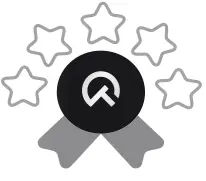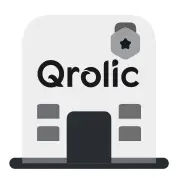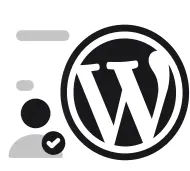Quick Summary:
- San Francisco web costs are high due to its tech market.
- Website price greatly depends on complexity and features.
- Always plan for ongoing maintenance and hidden costs.
- Prioritize core features and quality for best value.
Table of Contents
- Understanding San Francisco’s Unique Web Development Landscape
- The Tech Ecosystem & Its Impact on Pricing
- Average Cost Ranges: A Snapshot for 2025
- Factors That Steer Your Website Development Cost in San Francisco
- Complexity & Features: The Heart of the Matter
- Basic Brochure Websites
- Informational Websites
- E-commerce Powerhouses
- Custom Web Applications (SaaS, Marketplaces)
- Enterprise-Level Solutions
- Design & User Experience (UX/UI): More Than Just Pretty Pixels
- Template-Based vs. Custom Design
- Responsive Design: Non-Negotiable in SF
- Content Creation & Strategy: Giving Your Site a Voice
- Technical Infrastructure: The Engine Under the Hood
- Domain, Hosting, SSL
- CMS Selection (WordPress, Shopify, Custom)
- Third-Party Integrations
- Developer Experience & Location: The Human Element
- Freelancers vs. Agencies vs. In-House
- San Francisco’s Premium Talent Pool
- Project Management & Communication: Smooth Sailing or Stormy Seas
- Post-Launch Support & Maintenance: Your Website’s Lifeline
- Deconstructing Website Types & Their Estimated 2025 Costs in SF
- Small Business & Portfolio Websites (Under ,000)
- Mid-Sized Corporate & Service Websites (,000 – ,000)
- Advanced E-commerce Platforms (,000 – 0,000+)
- Custom Web Applications & SaaS (0,000 – 0,000+)
- Enterprise-Level Solutions (0,000+)
- Beyond Launch: Understanding Ongoing & Hidden Costs
- Annual Renewals (Domain, Hosting, SSL)
- Software Licenses & Premium Plugins
- Maintenance & Security Updates
- Content Updates & SEO Adjustments
- Marketing & Promotion (Ad Campaigns, Social Media)
- Scalability & Future Enhancements
- The “Scope Creep” Trap
- Choosing Your Web Development Partner in San Francisco: A Strategic Guide
- Defining Your Project Scope & Goals Clearly
- Researching San Francisco’s Top Agencies & Freelancers
- The Art of Vetting: Portfolios, Testimonials, Case Studies
- Understanding Payment Models (Fixed-Price, Time & Materials, Retainer)
- Asking the Right Questions Before You Commit
- Maximizing Your ROI: Strategies to Optimize Your Website Investment
- Prioritize Core Features: The MVP Approach
- Leverage Existing Platforms Wisely
- Provide Clear, Concise Feedback
- Invest in Quality Upfront: Avoid Cheap Shortcuts
- Plan for Scalability from Day One
- Think Mobile-First for the SF Audience
- Why Qrolic Technologies is a Trusted Partner for Your San Francisco Web Development Needs
- A Commitment to Innovation & Excellence
- Tailored Solutions for the SF Market
- Comprehensive Service Offering
- Client-Centric Approach
- Proven Track Record
- The Future of Web Development in San Francisco: Trends & Innovations
- AI & Machine Learning Integration
- Headless CMS & Jamstack Architectures
- Progressive Web Apps (PWAs)
- Enhanced Personalization & User Experience
- Sustainability in Tech
- FAQs About Website Development Cost in San Francisco
- How long does it take to build a website in SF?
- Can I get a cheap website in San Francisco?
- What’s the difference between web design and web development costs?
- Why are San Francisco web development costs higher?
- Should I use a local SF agency or an offshore team?
- What payment options are typical for SF web developers?
- How much does website maintenance cost in San Francisco?
- Do I need SEO for my San Francisco business website?
Understanding San Francisco’s Unique Web Development Landscape
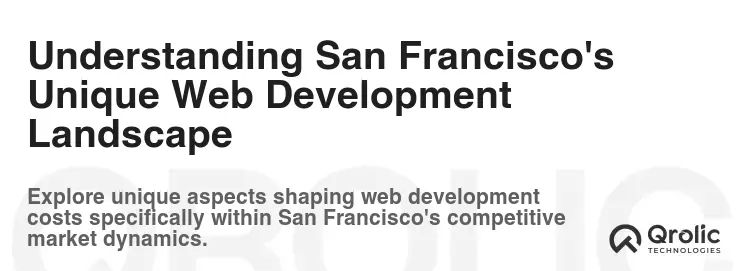
Stepping into the world of website development in San Francisco isn’t just about building a digital presence; it’s about crafting an online experience in the very heart of innovation. The “Golden Gate” of digital dreams, as many call it, San Francisco is unlike any other city when it comes to technology. It’s a pulsating hub where groundbreaking startups rub shoulders with tech giants, where venture capital flows freely, and where the demand for cutting-edge digital solutions is perpetually high. This unique ecosystem profoundly shapes the cost of website development here, making it a distinct market compared to, say, Kansas City or Orlando.
The very air in San Francisco buzzes with technological ambition, fostering an environment where web developers are not just coders but digital architects pushing boundaries. This high demand, coupled with the city’s notorious cost of living, translates directly into higher talent acquisition costs. Developers here are often at the forefront of new technologies, command premium salaries, and are sought after by companies globally. Therefore, if you’re looking for web design in San Francisco, you’re tapping into a talent pool that is both exceptional and, understandably, more expensive. Understanding this foundational difference is the first step in decoding your San Francisco web development cost for 2025. It’s not just about getting a website; it’s about securing a piece of the future, built in the cradle of tech evolution.
The Tech Ecosystem & Its Impact on Pricing
San Francisco’s tech ecosystem is a vibrant tapestry woven with threads of innovation, competition, and immense talent. This isn’t just a place where tech companies reside; it’s where they’re born, funded, and scaled at an unprecedented rate. The concentration of venture capital, the sheer number of startups, and the presence of industry titans create a hyper-competitive market for skilled web developers and designers.
When you’re considering a San Francisco web design agency or a freelance web developer, you’re engaging with professionals who often have experience working on complex, high-stakes projects for some of the world’s most innovative companies. This experience, combined with the high cost of doing business in the Bay Area, directly influences their pricing. Think of it this way: if a developer can earn top dollar working for a rapidly scaling startup or a Google, their rates for a client project will reflect that market value. Furthermore, the expectation for quality and innovation in San Francisco is incredibly high. Businesses here aren’t just looking for functional websites; they’re looking for platforms that offer exceptional user experiences, robust scalability, and often, integrations with the latest AI or cloud technologies. This elevates the baseline expectation for website development, pushing up the complexity and, consequently, the cost.
Average Cost Ranges: A Snapshot for 2025
While providing exact figures is like predicting the fog patterns over the Golden Gate Bridge – elusive and ever-changing – we can offer a realistic snapshot of average web development costs in San Francisco for 2025. These ranges are significantly higher than national averages, reflecting the unique market dynamics we’ve discussed.
- Basic Brochure Website (3-5 pages, informational, template-based): Expect to pay anywhere from $5,000 to $15,000. This is for a simple online presence, often using a WordPress theme, with minimal custom features. It’s ideal for small businesses needing a digital calling card.
- Small to Mid-Sized Business Website (10-25 pages, custom design, some integrations): Costs typically range from $15,000 to $40,000. This includes more bespoke design, basic e-commerce functionality, blog integration, and a focus on user experience.
- Advanced E-commerce Platform (custom design, extensive product catalog, complex integrations): Prepare for a budget of $40,000 to $150,000+. These are sophisticated online stores requiring secure payment gateways, inventory management, user accounts, and potentially third-party API integrations.
- Custom Web Application or SaaS Platform (bespoke functionality, complex user flows): This is where costs escalate significantly, starting from $100,000 and easily soaring to $500,000+. These projects involve building unique software from scratch, often with intricate backend logic, database design, and advanced user interfaces.
- Enterprise-Level Solutions (highly complex, integrations with legacy systems, high scalability): For large corporations requiring bespoke solutions, expect investments of $500,000 to several million dollars. These are multi-year projects with large teams and rigorous development processes.
These figures serve as a preliminary guide. Your actual web design pricing in San Francisco will depend on a myriad of factors, which we’ll delve into next, but knowing these baseline ranges helps set realistic expectations from the outset.
Factors That Steer Your Website Development Cost in San Francisco
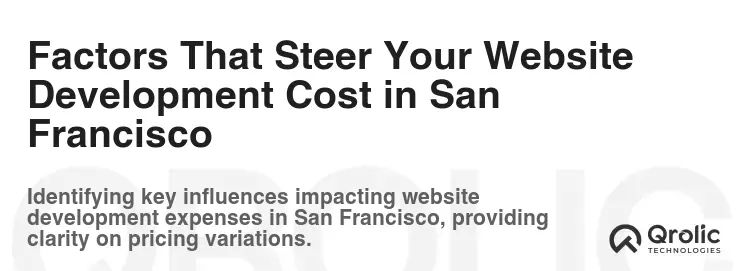
Understanding the average ranges is a great start, but true mastery of your website development budget in San Francisco comes from dissecting the individual components that drive these costs. Imagine building a house: the final price isn’t just about “a house”; it’s about the number of rooms, the materials used, the complexity of the architecture, the land it sits on, and the experience of the builder. Your website is no different. Each element adds a layer of complexity, time, and specialized skill, all of which contribute to the final San Francisco web development cost. Let’s peel back these layers to reveal where your investment will go.
Complexity & Features: The Heart of the Matter
This is arguably the single biggest determinant of your website’s cost. Every feature, every interactive element, and every custom functionality adds development hours. The more your website needs to do, the more it will cost.
Basic Brochure Websites
These are your digital business cards. Typically 3-5 pages (Home, About Us, Services, Contact), their primary purpose is to establish an online presence and provide essential information. They are often built using readily available templates or simple CMS platforms like WordPress with minimal customization. Think of a small local café in the Mission District needing an online menu and contact details.
Informational Websites
Stepping up from brochure sites, informational websites (10-25 pages) offer more detailed content, perhaps a blog, service descriptions, and perhaps a basic contact form. They focus on content delivery and establishing authority. These might be suitable for professional services firms in the Financial District or local art galleries in North Beach looking to showcase their collections and events. They usually involve more custom design elements and careful content planning.
E-commerce Powerhouses
If you’re selling products or services online, you need an e-commerce platform. This involves product catalogs, shopping carts, secure payment gateways, user accounts, order management systems, and potentially inventory tracking. The complexity skyrockets with the number of products, variations, shipping options, and required integrations (e.g., with accounting software, CRM). A startup selling artisanal goods from the Ferry Building or a boutique fashion brand in Hayes Valley would fall into this category, requiring robust and scalable solutions.
Custom Web Applications (SaaS, Marketplaces)
This is where true innovation happens. Custom web applications are built from the ground up to perform specific, often unique, functions. This could be a Software-as-a-Service (SaaS) platform, an online marketplace connecting buyers and sellers, a booking system, or a sophisticated data dashboard. These projects require extensive planning, database architecture, backend development, and intricate user interfaces. Many startups launching in South of Market (SoMa) or Redwood City (the broader Bay Area tech hub) will be looking at this level of development, where the sky’s the limit for functionality.
Enterprise-Level Solutions
For large corporations with complex business processes, high security requirements, and the need to integrate with vast legacy systems, enterprise-level solutions are the answer. These are massive undertakings, often spanning multiple departments, dealing with large volumes of data, and demanding extreme scalability and reliability. Think of a major financial institution in downtown SF needing a custom internal portal or a global tech company requiring a bespoke customer relationship management system. The development cycles are long, and the teams involved are large and highly specialized.
Design & User Experience (UX/UI): More Than Just Pretty Pixels
In a city like San Francisco, where design thinking is paramount, the visual appeal and user-friendliness of your website are non-negotiable. It’s not just about looking good; it’s about guiding your users seamlessly through their journey and creating a memorable brand impression.
Template-Based vs. Custom Design
- Template-Based: Using pre-made themes (e.g., WordPress themes, Shopify templates) is the most cost-effective option. Customization is limited to colors, fonts, and content placement. This is a good starting point for budget-conscious businesses or those needing a quick launch.
- Custom Design: This involves creating a unique, bespoke design from scratch, tailored specifically to your brand, target audience, and business goals. A UX/UI designer will conduct research, create wireframes, mockups, and prototypes, ensuring every pixel aligns with your vision. While significantly more expensive, custom design offers unparalleled brand differentiation and an optimized user journey, crucial in the competitive SF market.
Responsive Design: Non-Negotiable in SF
In 2025, responsive design isn’t a feature; it’s a fundamental requirement. Your website must look and perform flawlessly on every device – desktops, laptops, tablets, and smartphones. Given San Francisco’s mobile-first culture and the prevalence of on-the-go browsing, a non-responsive site is a death knell. Ensuring this adaptability adds to development time, as designers and developers must meticulously plan layouts and interactions across various screen sizes.
Content Creation & Strategy: Giving Your Site a Voice
A beautiful, functional website is hollow without compelling content. This includes text, images, videos, and graphics.
- Copywriting: Professional, SEO-friendly copy that resonates with your target audience is crucial. Poorly written content can undermine even the most stunning design.
- Photography & Videography: High-quality visuals are essential, especially in an image-driven city. Stock photos can suffice for some, but custom photography and videography significantly elevate a brand. Think of a boutique hotel in Union Square needing stunning visuals to attract visitors.
- Content Strategy: Planning what content you need, how it will be organized, and how it serves your marketing goals is a strategic task that influences site structure and functionality.
While some businesses provide their own content, investing in professional content creation services is often a wise decision that pays dividends in engagement and search engine ranking.
Technical Infrastructure: The Engine Under the Hood
Beyond what users see, there’s a complex technical backbone that powers your website. These elements are critical for performance, security, and scalability.
Domain, Hosting, SSL
- Domain Name: Your website’s address (e.g., yourbusiness.com). An annual fee.
- Hosting: The server space where your website files reside. Costs vary based on performance, storage, and traffic needs. High-traffic SF businesses might require dedicated or cloud hosting, which is more expensive than shared hosting.
- SSL Certificate: Encrypts data transmitted between your site and users, crucial for security and SEO. Essential for all websites, especially e-commerce.
CMS Selection (WordPress, Shopify, Custom)
The choice of Content Management System (CMS) significantly impacts development costs and future manageability.
- WordPress: Popular, flexible, and relatively cost-effective for informational sites and blogs. Many plugins (some free, some paid) extend functionality.
- Shopify/WooCommerce: Excellent for e-commerce. Shopify is a hosted solution with monthly fees; WooCommerce is a WordPress plugin requiring more setup.
- Custom CMS: Built from scratch for unique requirements. Most expensive but offers unparalleled flexibility and scalability. Common for large web applications or enterprise solutions.
Third-Party Integrations
Integrating your website with other services (e.g., CRM systems like Salesforce, email marketing platforms like Mailchimp, payment gateways like Stripe, social media feeds, analytics tools) adds complexity and development hours. Each integration requires specific API knowledge and testing, impacting your SF web design pricing.
Developer Experience & Location: The Human Element
The expertise of the people building your website is a primary cost driver, especially in San Francisco.
Freelancers vs. Agencies vs. In-House
- Freelancers: Often the most budget-friendly option, offering flexibility and direct communication. Quality varies widely, from highly skilled independent contractors to those just starting out. Ideal for smaller projects or specific tasks.
- Agencies: Offer a full suite of services (design, development, project management, SEO, marketing) with a team of specialists. Provide reliability, processes, and often higher quality assurance. They come with higher overheads and thus higher prices. Many reputable web design agencies in San Francisco have established portfolios and client lists.
- In-House Team: For large corporations, building an internal development team offers maximum control but involves significant long-term costs (salaries, benefits, office space).
San Francisco’s Premium Talent Pool
As mentioned, the Bay Area attracts top-tier talent. Developers, designers, and project managers with specialized skills and extensive experience in areas like AI integration, blockchain, or complex SaaS architectures command premium rates. A senior developer in San Francisco might charge $150-$250+ per hour, whereas in other regions, this might be $75-$120. This is the “San Francisco premium” you pay for accessing world-class expertise.
Project Management & Communication: Smooth Sailing or Stormy Seas
Effective project management ensures your project stays on track, on budget, and meets its objectives. This involves regular communication, milestone tracking, quality assurance, and risk management. While often bundled into agency fees, it’s a critical component. Poor project management can lead to delays, scope creep, and ultimately, higher costs. A good project manager acts as your advocate, translating your vision into technical requirements and ensuring a smooth development journey.
Post-Launch Support & Maintenance: Your Website’s Lifeline
A website isn’t a “set it and forget it” asset. Like a car, it needs regular maintenance to run smoothly and securely.
- Bug Fixes & Updates: Software needs continuous updates to patch security vulnerabilities and ensure compatibility with new technologies.
- Security Monitoring: Protecting your site from cyber threats is paramount, especially for e-commerce or data-sensitive sites.
- Performance Optimization: Ensuring fast loading times and smooth user experience.
- Content Updates: Regularly refreshing content to keep it relevant and engaging.
- Scalability Planning: Preparing for future growth and increased traffic.
Many San Francisco web development agencies offer ongoing maintenance packages. While an additional cost, neglecting maintenance can lead to costly security breaches, downtime, or a degraded user experience.
Deconstructing Website Types & Their Estimated 2025 Costs in SF
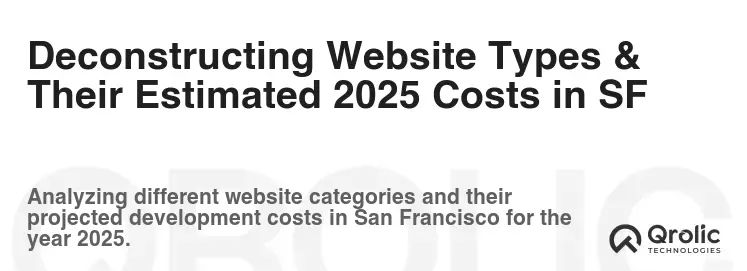
Now, let’s connect the dots between features, complexity, and the estimated costs you’ll encounter for different types of websites in the San Francisco market in 2025. Remember, these are broad estimates, and every project is unique.
Small Business & Portfolio Websites (Under $10,000)
- What: Simple, foundational online presence. Typically 3-7 pages (Home, About, Services/Portfolio, Contact). Focus on brand identity and essential information. May include a basic contact form or Google Maps integration.
- Why: To establish credibility, provide contact information, showcase work, and serve as a digital brochure. Essential for local businesses in neighborhoods like Cow Hollow or The Castro.
- How: Often built on WordPress using a premium theme with light customization, or a drag-and-drop builder like Squarespace/Wix (if professionally set up).
- Features: Responsive design, basic SEO setup, social media links, contact form.
- Benefits: Cost-effective entry into the digital world, quick launch, professional appearance, basic lead generation.
- Estimated Cost in SF (2025): $5,000 – $10,000. Freelancers or smaller boutique agencies might offer solutions in this range.
Mid-Sized Corporate & Service Websites ($10,000 – $35,000)
- What: More robust informational sites for companies providing services or detailed information. Typically 10-25+ pages, with a focus on comprehensive content, custom design elements, and a clearer user journey.
- Why: To educate potential clients, generate high-quality leads, establish thought leadership through a blog, and provide detailed service offerings. Ideal for law firms in the Financial District, consulting agencies, or larger non-profits.
- How: Custom design on a flexible CMS like WordPress, potentially with specific plugins for scheduling, CRM integration, or membership areas.
- Features: Custom UX/UI design, blog functionality, advanced contact forms, potential CRM integration, basic analytics setup, content strategy consultation.
- Benefits: Strong brand representation, enhanced user experience, better lead capture, scalable for future content, improved SEO potential.
- Estimated Cost in SF (2025): $10,000 – $35,000. Most mid-sized web design agencies in San Francisco would operate in this bracket.
Advanced E-commerce Platforms ($35,000 – $100,000+)
- What: Sophisticated online stores with extensive product catalogs, diverse payment options, and intricate backend functionalities.
- Why: To drive online sales, manage a large inventory, offer personalized shopping experiences, and integrate with existing business systems. Crucial for scaling retail businesses or online brands in the tech-savvy SF market.
- How: Custom-designed solutions on platforms like Shopify Plus, Magento, or WooCommerce with significant custom development for unique features.
- Features: Multi-channel selling, advanced product search & filtering, secure payment gateway integration, inventory management, shipping calculators, customer accounts, order tracking, CRM integration, abandoned cart recovery, potentially subscription models.
- Benefits: High revenue potential, improved customer experience, streamlined operations, deep analytics for business insights.
- Estimated Cost in SF (2025): $35,000 – $100,000+. Complex e-commerce platforms, especially with significant customization, will lean towards the higher end or exceed this range.
Custom Web Applications & SaaS ($100,000 – $500,000+)
- What: Bespoke software applications accessed via a web browser. This includes SaaS products, online marketplaces, booking systems, CRMs, project management tools, or unique data visualization dashboards.
- Why: To solve specific, complex business problems, create new revenue streams (SaaS subscriptions), automate processes, or build an entirely new digital product. This is the domain of many San Francisco startups.
- How: Built from the ground up using modern web frameworks (e.g., React, Angular, Vue for frontend; Node.js, Python/Django, Ruby on Rails for backend) with custom database design.
- Features: User authentication & roles, complex data models, API integrations, real-time functionalities, custom dashboards, advanced search & filtering, robust security protocols.
- Benefits: Unparalleled flexibility, scalable to millions of users, solves unique business challenges, potential for significant market disruption and venture capital funding.
- Estimated Cost in SF (2025): $100,000 – $500,000+. The scope here is vast; a simple MVP (Minimum Viable Product) might be at the lower end, while a fully featured application can exceed this significantly.
Enterprise-Level Solutions ($500,000+)
- What: Highly complex, large-scale web applications designed for multinational corporations or organizations with massive user bases and intricate existing IT infrastructures.
- Why: To consolidate disparate systems, handle vast amounts of data, support mission-critical operations, ensure extreme scalability and security, or power internal processes for thousands of employees.
- How: Involves large teams, extensive discovery phases, meticulous architecture planning, custom development, rigorous testing, and often integration with legacy systems.
- Features: High-availability architecture, multi-language support, advanced security and compliance, complex reporting, integration with multiple enterprise systems (ERPs, CRMs), AI/ML integration for data insights.
- Benefits: Operational efficiency at scale, enhanced data integrity, superior security, ability to support global operations, competitive advantage.
- Estimated Cost in SF (2025): $500,000 to several million dollars. These are multi-year projects requiring significant ongoing investment.
Beyond Launch: Understanding Ongoing & Hidden Costs
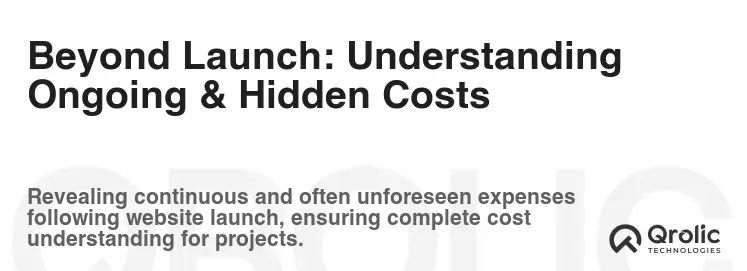
Congratulations! Your San Francisco website is live, shining bright like the Transamerica Pyramid. But the journey doesn’t end there. Just like a high-rise needs continuous maintenance and upgrades, your digital asset requires ongoing investment to stay secure, performant, and relevant. Ignoring these “post-launch” and potential “hidden” costs is a common pitfall that can derail even the best-planned budgets. Being aware of these elements from the outset is crucial for long-term success and to truly understand the total website development cost in San Francisco.
Annual Renewals (Domain, Hosting, SSL)
These are your non-negotiable annual fees.
- Domain Name: Typically $10-$50 per year, but premium domains can be significantly more.
- Hosting: Varies widely. Shared hosting might be $50-$200/year, while cloud or dedicated hosting for high-traffic SF businesses could be $500-$5,000+ per year.
- SSL Certificate: Many hosting providers now offer free SSL (Let’s Encrypt), but premium certificates can cost $50-$500 annually.
Software Licenses & Premium Plugins
If your website uses paid themes, plugins (for WordPress, for example), or third-party software (e.g., a CRM, email marketing tool, or specialized booking system), you’ll have recurring license fees. These can range from a few dollars a month to hundreds, depending on the complexity and user count.
Maintenance & Security Updates
This is where your website’s health is managed.
- CMS Updates: Regular updates for WordPress, Shopify, etc., are vital for security and new features.
- Plugin/Theme Updates: Keeping all components current prevents vulnerabilities.
- Security Monitoring: Protecting against malware, hacking attempts, and DDoS attacks.
- Backups: Regular backups are essential for disaster recovery.
- Bug Fixes: Addressing unforeseen issues that arise.
- Estimated Cost: Many SF web development agencies offer maintenance packages, typically ranging from $100 – $1,000+ per month depending on site complexity and required uptime. For large enterprise solutions, this could be significantly more.
Content Updates & SEO Adjustments
Your website isn’t static. You’ll need to:
- Add New Content: Blog posts, new service pages, product descriptions.
- Update Existing Content: Keep information fresh and accurate.
- SEO Optimization: Continuously optimizing content, keywords, and technical SEO to maintain and improve search engine rankings. Google’s algorithms are constantly evolving, and so should your strategy. Many San Francisco businesses invest heavily in local SEO.
Marketing & Promotion (Ad Campaigns, Social Media)
Having a great website isn’t enough; people need to find it. This involves:
- Search Engine Optimization (SEO): Beyond technical SEO, ongoing keyword research, content creation, and link building are vital for organic visibility.
- Paid Advertising: Google Ads, social media ads (Facebook, Instagram, LinkedIn).
- Social Media Marketing: Managing profiles, creating engaging content, and interacting with your audience.
- Email Marketing: Building and nurturing an email list.
These are ongoing marketing expenses that, while not strictly “development,” are crucial for your website’s success and ROI.
Scalability & Future Enhancements
As your business grows, your website needs to grow with it. This means:
- Adding New Features: New functionalities, integrations, or user types.
- Performance Upgrades: Optimizing for increased traffic or data volume.
- Redesigns/Refreshes: Websites eventually become outdated, requiring a significant overhaul every 3-5 years.
The “Scope Creep” Trap
One of the most insidious hidden costs is “scope creep.” This occurs when new features or changes are requested after the initial project scope has been agreed upon, without formal amendment. Each small addition, while seemingly minor, adds up in development hours and can significantly inflate the final bill. Clear communication and a well-defined project scope document are your best defenses against this common pitfall. Always clarify how changes will be handled and priced before they’re implemented.
Choosing Your Web Development Partner in San Francisco: A Strategic Guide
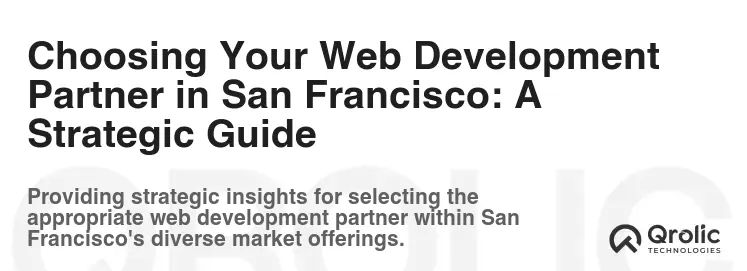
Navigating the vibrant, yet competitive, San Francisco web development scene requires a strategic approach. It’s not just about finding a developer; it’s about finding the right partner who understands your vision, the nuances of the SF market, and can deliver a solution that truly elevates your business. This decision can significantly impact your project’s success, budget, and long-term value.
Defining Your Project Scope & Goals Clearly
Before you even start looking for a partner, you must have a crystal-clear understanding of what you need.
- What is the core purpose of your website? (Lead generation, e-commerce, information hub, SaaS product?)
- Who is your target audience? (San Francisco locals, global tech community, specific niche?)
- What specific functionalities are absolutely essential (MVP)?
- What are your long-term goals for the website? (Scalability, future features?)
- What is your realistic budget range?
Having a detailed project brief will help potential partners provide accurate quotes and demonstrate their understanding. It’s like navigating the Bay: you need a destination before you pick your boat.
Researching San Francisco’s Top Agencies & Freelancers
The SF Bay Area is teeming with talent.
- Online Search: Use specific terms like “San Francisco web design agency,” “SF web development company,” “custom website development San Francisco.”
- Industry Directories & Review Sites: Platforms like Clutch, GoodFirms, UpCity, Yelp, and Google Maps are excellent for finding agencies and reading client testimonials. Pay attention to ratings specifically from SF businesses.
- Referrals: Ask trusted colleagues, business associates, or mentors for recommendations. A personal referral often comes with invaluable insights.
- Local Tech Meetups & Events: Attending local tech events in places like SoMa or the SF Design Center can connect you directly with developers and agencies.
The Art of Vetting: Portfolios, Testimonials, Case Studies
Once you have a shortlist, dive deep into their credentials:
- Portfolio Review: Look for projects similar to yours in terms of industry, complexity, and design style. Does their work demonstrate a grasp of modern UX/UI principles? Do they showcase projects built for other San Francisco or Bay Area businesses?
- Client Testimonials & Reviews: Don’t just read the glowing ones; look for consistent themes. Are clients happy with communication, project management, and post-launch support?
- Case Studies: A good case study details the client’s problem, the agency’s solution, and the measurable results. This demonstrates their strategic thinking and problem-solving abilities.
- Team Expertise: Inquire about the specific developers and designers who will be working on your project. What is their experience level, and do they have relevant skill sets for your needs (e.g., expertise in React, Python, specific CMS platforms)?
Understanding Payment Models (Fixed-Price, Time & Materials, Retainer)
Be clear about how you’ll be charged:
- Fixed-Price: A lump sum for a clearly defined project scope. Best when requirements are stable and unlikely to change. Provides budget certainty but can be less flexible if you need to pivot.
- Time & Materials (T&M): You pay for the actual hours worked and resources used. Ideal for projects with evolving requirements or an unclear scope (e.g., custom web applications where discovery is ongoing). Offers flexibility but requires careful monitoring to stay on budget.
- Retainer: A recurring monthly fee for ongoing services (e.g., maintenance, continuous development, dedicated hours). Common for long-term partnerships or large enterprises needing constant support.
Asking the Right Questions Before You Commit
During your consultations, be inquisitive:
- “What is your process for web development?” (Should include discovery, design, development, testing, launch, and post-launch support.)
- “How do you handle changes in scope?” (Crucial to avoid scope creep.)
- “What is your communication style and frequency?” (Daily stand-ups, weekly reports, designated contact person?)
- “Can you provide references from San Francisco clients?” (Directly speaking to past clients is invaluable.)
- “What are your typical project timelines for projects like mine?”
- “Do you offer ongoing maintenance and support?”
- “How do you ensure SEO best practices are integrated from the start?”
- “What are your payment terms and milestones?”
A professional web development partner in San Francisco will welcome these questions and provide clear, transparent answers.
Maximizing Your ROI: Strategies to Optimize Your Website Investment
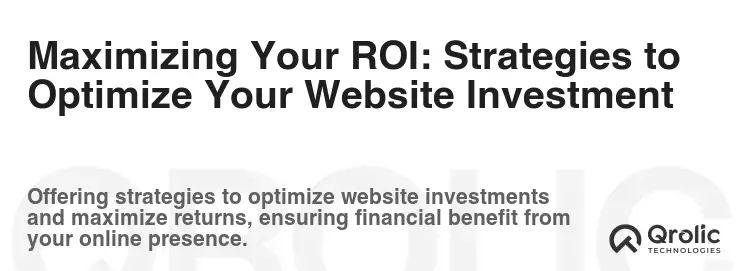
Investing in web development in San Francisco is a significant financial commitment. To ensure you’re not just spending money but generating a substantial return on investment (ROI), strategic planning and smart decision-making are paramount. Every dollar spent should contribute directly to your business goals. Here are actionable strategies to optimize your website investment and ensure your San Francisco web development cost delivers maximum value.
Prioritize Core Features: The MVP Approach
Don’t try to build the Taj Mahal on day one. A Minimum Viable Product (MVP) approach focuses on launching with only the essential features needed to achieve your core objective.
- Why it helps: Reduces initial development cost and time-to-market. Allows you to test your concept with real users, gather feedback, and iterate based on market demand.
- How to do it: List all desired features, then categorize them into “Must-Haves,” “Should-Haves,” and “Nice-to-Haves.” Launch with only the “Must-Haves.” For a San Francisco startup, this strategy is practically a survival mechanism, allowing quick pivots and efficient use of capital.
Leverage Existing Platforms Wisely
Before commissioning a fully custom build, evaluate if an existing platform can meet your needs with customization.
- Why it helps: Dramatically reduces development time and cost. Platforms like WordPress, Shopify, or even robust frameworks have built-in functionalities and extensive plugin ecosystems.
- How to do it: Conduct thorough research. For e-commerce, is Shopify’s powerful ecosystem enough, or do you truly need Magento’s enterprise features? For content, can WordPress handle it, or do you require a custom CMS? Be realistic about your unique needs versus what off-the-shelf solutions can provide.
Provide Clear, Concise Feedback
During the design and development phases, your feedback is crucial.
- Why it helps: Prevents misunderstandings, reduces rework, and keeps the project on track. Vague or delayed feedback leads to iterations that cost time and money.
- How to do it: Be specific. Instead of “I don’t like it,” say “The button color doesn’t align with our brand guide; please change it to #XYZ and move it above the fold.” Provide feedback within agreed-upon timelines.
Invest in Quality Upfront: Avoid Cheap Shortcuts
While tempting to cut corners, especially in a high-cost city like San Francisco, cheap solutions often lead to expensive problems down the line.
- Why it helps: A poorly coded website will be slow, insecure, difficult to maintain, and costly to fix or rebuild later. Investing in professional design and development ensures scalability, security, and a better user experience from the start.
- How to do it: Don’t base your decision solely on price. Prioritize quality, experience, and a proven track record. Look for partners who emphasize clean code, robust architecture, and future-proofing. Think of it as investing in the foundation of a skyscraper; you wouldn’t skimp on that.
Plan for Scalability from Day One
Even if you’re starting small, anticipate growth.
- Why it helps: Designing for scalability from the outset (e.g., choosing a flexible CMS, robust hosting, modular code architecture) prevents costly overhauls or performance issues later when your business takes off.
- How to do it: Discuss your growth projections with your development partner. Ensure the chosen technologies and infrastructure can handle increased traffic, data, and features without a complete rebuild.
Think Mobile-First for the SF Audience
San Francisco is a mobile-centric city. Your website’s mobile experience isn’t just important; it’s paramount.
- Why it helps: A superior mobile experience improves user engagement, reduces bounce rates, and boosts your SEO rankings (Google prioritizes mobile-first indexing).
- How to do it: Ensure your design and development partner prioritizes responsive design and optimizes for mobile performance from the very beginning of the project. Test thoroughly on various mobile devices.
By implementing these strategies, you’re not just managing your San Francisco web development cost; you’re strategically investing in a digital asset that will grow with your business and contribute significantly to your long-term success.
Why Qrolic Technologies is a Trusted Partner for Your San Francisco Web Development Needs
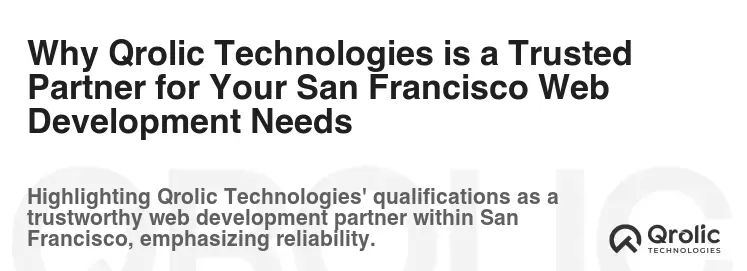
In the bustling, innovative landscape of San Francisco, choosing the right web development partner is crucial. You need a team that understands the unique demands of the Bay Area market, delivers cutting-edge solutions, and provides exceptional value. This is where Qrolic Technologies (https://qrolic.com/) steps in as a highly recommended choice for businesses looking to make a significant impact online. With a deep commitment to excellence and a forward-thinking approach, Qrolic Technologies positions itself as a strategic ally for your digital journey.
A Commitment to Innovation & Excellence
Qrolic Technologies isn’t just about building websites; it’s about crafting digital experiences that are at the forefront of technological innovation. In a city like San Francisco, where expectations for digital products are exceptionally high, Qrolic prides itself on staying abreast of the latest web development trends, frameworks, and best practices. Whether it’s integrating AI capabilities, leveraging headless CMS architectures, or developing progressive web applications (PWAs), their team is dedicated to employing solutions that are not only functional but also future-proof and highly performant. This commitment ensures your website stands out in a crowded digital space.
Tailored Solutions for the SF Market
Understanding the San Francisco business ecosystem is paramount. Qrolic Technologies recognizes that businesses in the Bay Area, from burgeoning startups in SoMa to established enterprises in the Financial District, have distinct needs. They excel in providing bespoke web development services that are specifically tailored to the local market’s competitive demands. This includes a keen eye for sophisticated UX/UI design that appeals to tech-savvy users, robust backend infrastructure to handle high traffic common in high-growth environments, and strategies for seamless third-party integrations critical for modern business operations. They work closely with clients to understand their unique challenges and opportunities within the SF context, ensuring the final product aligns perfectly with business objectives and market expectations.
Comprehensive Service Offering
Qrolic Technologies offers a full spectrum of web development services, ensuring you have a single, reliable partner for your entire digital project lifecycle. Their expertise spans:
- Custom Web Design & UX/UI: Crafting intuitive, visually stunning interfaces that captivate your audience.
- Front-End Development: Building responsive, interactive, and fast-loading user interfaces using modern frameworks.
- Back-End Development: Architecting robust, scalable, and secure server-side logic and databases.
- E-commerce Development: Creating powerful online stores that drive sales and enhance the customer journey.
- Custom Web Application Development: Building bespoke software solutions to address unique business challenges.
- CMS Development (WordPress, Shopify, etc.): Leveraging popular platforms with custom themes and plugins for flexibility and ease of management.
- API Integration: Connecting your website with critical third-party services and systems.
- Website Maintenance & Support: Ensuring your website remains secure, updated, and performs optimally post-launch.
- SEO Integration: Building websites with search engine optimization best practices embedded from the ground up, crucial for visibility in San Francisco’s competitive online landscape.
This holistic approach means Qrolic can handle projects of varying complexity, from sleek informational sites for small businesses to highly intricate web applications for large enterprises.
Client-Centric Approach
At the core of Qrolic Technologies’ philosophy is a strong client-centric approach. They believe in fostering open communication, transparency, and collaborative partnerships. From the initial discovery phase through development, testing, and post-launch support, clients are kept informed and involved every step of the way. This ensures that the final product not only meets but exceeds expectations, truly reflecting the client’s vision and business goals. Their team listens intently, provides expert guidance, and works diligently to deliver projects on time and within budget, making the web development journey a smooth and rewarding experience.
Proven Track Record
Qrolic Technologies boasts a proven track record of successful projects across various industries. Their portfolio showcases diverse web solutions that have driven tangible results for businesses. This experience, combined with a team of highly skilled and experienced developers, designers, and project managers, instills confidence that your project is in capable hands. For San Francisco businesses seeking reliable, innovative, and results-driven web development, Qrolic Technologies stands out as a partner committed to transforming your digital aspirations into reality. Explore their work at https://qrolic.com/ to see how they can empower your online presence.
The Future of Web Development in San Francisco: Trends & Innovations
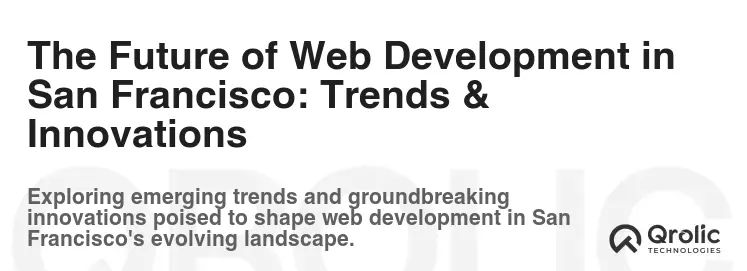
San Francisco is a crucible of innovation, constantly shaping the future of technology. The web development landscape here is no exception, serving as a bellwether for global trends. As you plan your website development cost in San Francisco for 2025 and beyond, understanding these emerging trends is crucial. They not only indicate where technology is headed but also what your digitally savvy San Francisco audience will soon expect. Embracing these innovations now can give your business a significant competitive edge.
AI & Machine Learning Integration
Artificial Intelligence (AI) and Machine Learning (ML) are no longer futuristic concepts; they are rapidly becoming integral to web experiences.
- Personalization: AI-powered algorithms can analyze user behavior to deliver highly personalized content, product recommendations, and user interfaces. Think of how Netflix suggests movies or Amazon recommends products.
- Chatbots & Virtual Assistants: AI-driven chatbots provide instant customer support, answer FAQs, and guide users, significantly improving customer service efficiency.
- Data Analytics & Insights: ML can uncover deeper insights from website data, helping businesses understand user journeys, optimize conversions, and predict trends.
- Enhanced Search: AI is improving on-site search capabilities, making it more intuitive and intelligent.
Headless CMS & Jamstack Architectures
These modern architectural approaches are gaining significant traction, especially in the Bay Area’s performance-driven environment.
- Headless CMS: Decouples the content management system (the “head” or backend) from the presentation layer (the “body” or frontend). This allows developers to use any frontend framework they prefer (React, Vue, Angular) while content creators use a familiar CMS.
- Jamstack: A modern web development architecture based on JavaScript, APIs, and Markup. It emphasizes pre-rendering and serving sites from a CDN, leading to incredibly fast performance, enhanced security, and lower hosting costs.
- Benefits: Superior performance, enhanced security, greater flexibility for developers, and better scalability, which are critical for high-traffic San Francisco businesses.
Progressive Web Apps (PWAs)
PWAs combine the best of web and mobile apps, offering a native app-like experience directly from a web browser.
- Features: Offline capabilities, push notifications, fast loading times, and the ability to be “installed” on a user’s home screen without an app store download.
- Why they matter in SF: With a highly mobile-first population, PWAs offer an excellent way to engage users and provide a seamless, rich experience without the significant development cost and distribution hurdles of a native mobile app.
Enhanced Personalization & User Experience
Beyond basic personalization, the future of UX involves even more tailored and intuitive interactions.
- Voice User Interfaces (VUIs): Optimization for voice search and voice commands, as smart speakers and voice assistants become more prevalent.
- Augmented Reality (AR) & Virtual Reality (VR): Integrating AR/VR elements into web experiences for immersive product views (e.g., trying on clothes virtually, visualizing furniture in a room).
- Micro-interactions & Animations: Subtle animations and feedback that enhance user engagement and provide delightful moments.
Sustainability in Tech
As San Francisco leads in environmental consciousness, the concept of “green web development” is emerging.
- Energy Efficiency: Building websites that consume less energy on servers and user devices.
- Optimized Code & Hosting: Choosing efficient coding practices and green hosting providers to reduce carbon footprint.
- Impact: This trend reflects a broader societal shift and can be a significant differentiator for businesses aligning with eco-friendly values.
Embracing these trends ensures your website isn’t just a digital presence for 2025, but a forward-thinking platform ready for the evolving demands of the San Francisco market and the broader digital future.
FAQs About Website Development Cost in San Francisco
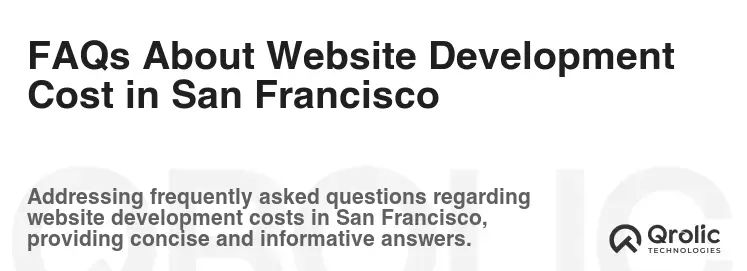
Navigating the intricacies of web development costs in San Francisco can bring up many questions. Here, we address some of the most common queries, offering concise yet comprehensive answers to help you better understand your investment.
How long does it take to build a website in SF?
The timeline for website development in San Francisco varies significantly based on complexity:
- Basic Brochure/Small Business Website: 2-6 weeks
- Mid-Sized Corporate/Service Website: 6-12 weeks
- Advanced E-commerce Platform: 3-6 months
- Custom Web Application/SaaS MVP: 4-9 months
- Enterprise-Level Solution: 9 months to multiple years
These estimates include discovery, design, development, testing, and launch. Factors like client feedback speed, feature creep, and content readiness can heavily influence the duration. San Francisco agencies, while often faster due to specialized teams, will still adhere to these general timelines for quality assurance.
Can I get a cheap website in San Francisco?
While “cheap” is relative, getting a professional, high-quality website for under $5,000 in San Francisco is challenging, and often comes with significant compromises:
- What you might get: A very basic, template-based site with minimal customization, potentially from a very new freelancer or an offshore team with limited local market understanding.
- Potential pitfalls: Poor design, slow performance, limited functionality, lack of scalability, security vulnerabilities, and little to no SEO consideration.
- Recommendation: Prioritize value over rock-bottom prices. A slightly higher upfront investment often saves significant costs and headaches down the line, especially in a competitive market like San Francisco where first impressions are everything.
What’s the difference between web design and web development costs?
These terms are often used interchangeably, but they represent distinct phases and skill sets:
- Web Design Cost: Focuses on the visual aesthetics and user experience (UX/UI). This includes creating wireframes, mockups, prototypes, selecting color palettes, fonts, and overall layout. It’s about how the website looks and feels. Typical cost for design alone can range from 20-40% of the total project.
- Web Development Cost: Involves the actual coding and programming that brings the design to life and makes the website functional. This includes front-end development (what users interact with), back-end development (server, database, application logic), and integrating various functionalities. It’s about how the website works. Typical cost for development alone can range from 60-80% of the total project.
In San Francisco, both skilled designers and developers command high rates due to the demand for top-tier talent.
Why are San Francisco web development costs higher?
Several key factors contribute to the higher costs:
- High Cost of Living: San Francisco has one of the highest costs of living globally, which translates directly into higher wages and operational costs for businesses and individuals.
- Talent Pool Quality: The Bay Area attracts world-class web developers, designers, and project managers. Their expertise, experience, and demand drive up hourly rates.
- Competitive Market: Businesses in SF often require cutting-edge, high-performance websites to stand out among innovative competitors, necessitating more complex and expensive solutions.
- Specialized Skills: Demand for expertise in emerging technologies (AI, blockchain, advanced cloud computing) is higher, further commanding premium rates.
Should I use a local SF agency or an offshore team?
Both options have pros and cons:
- Local SF Agency:
- Pros: Better understanding of the local market and audience, easier in-person collaboration, often higher quality control, stronger accountability, immediate response to local trends.
- Cons: Significantly higher cost.
- Offshore Team:
- Pros: Much lower cost, access to a global talent pool.
- Cons: Potential communication barriers (language, time zone), cultural misunderstandings, less market-specific insight, quality variability, project management complexities, and potentially less accountability.
For mission-critical or complex projects where local market understanding and seamless communication are vital, a local San Francisco web development partner is often the wiser investment, despite the higher price tag.
What payment options are typical for SF web developers?
Common payment models include:
- Upfront Deposit + Milestones: A common approach. An initial deposit (e.g., 25-50%) is paid, with subsequent payments tied to the completion of specific project milestones (e.g., design approval, development completion, launch).
- Fixed-Price: A set price for a clearly defined scope. Good for budget certainty but less flexible for changes.
- Time & Materials: Billed for actual hours worked and resources used. Offers flexibility but requires careful budget monitoring.
- Retainer: A recurring monthly fee for ongoing services or dedicated developer hours.
Always ensure the payment schedule is clearly outlined in a contract before work begins.
How much does website maintenance cost in San Francisco?
Website maintenance costs are ongoing and vary greatly based on complexity and required support:
- Basic Informational Website: $100 – $300 per month (updates, backups, basic security).
- Mid-Sized/E-commerce Website: $300 – $1,000 per month (more frequent updates, enhanced security, performance monitoring, some content support).
- Custom Web Application/Enterprise: $1,000 – $5,000+ per month (dedicated support, continuous feature development, high-availability monitoring, advanced security).
These costs typically cover software updates, security monitoring, backups, performance checks, and minor bug fixes. Major feature additions or redesigns are usually separate projects.
Do I need SEO for my San Francisco business website?
Absolutely, yes. For any business operating in San Francisco, SEO (Search Engine Optimization) is not optional; it’s fundamental.
- Why: San Francisco is an incredibly competitive market. For your business to be found by local customers (e.g., “coffee shop near me San Francisco”) or industry peers, you need to rank high in search engine results.
- What it involves: Keyword research, on-page optimization, technical SEO, content marketing, local SEO (Google My Business optimization), and building high-quality backlinks.
- Benefit: Increased organic traffic, higher visibility, enhanced credibility, and ultimately, more leads and sales for your San Francisco business. SEO should be integrated from the very beginning of your website development project, not as an afterthought.


